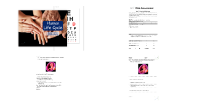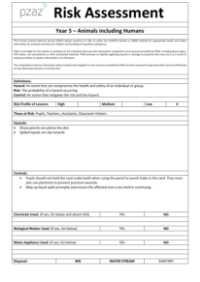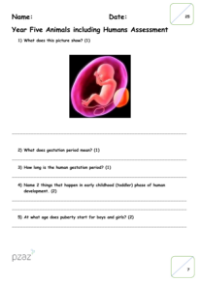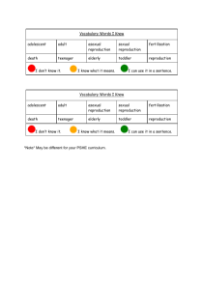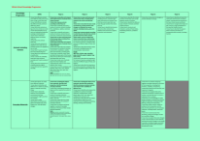Animal including Humans - Answers
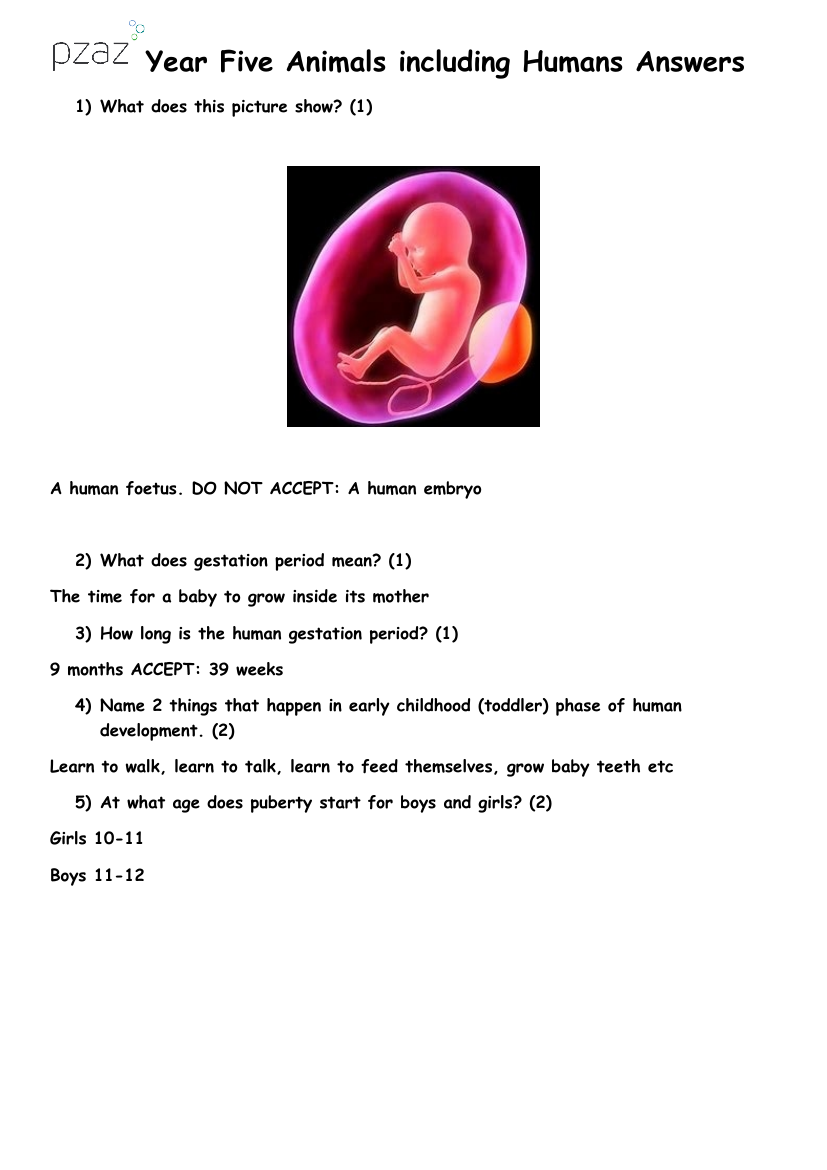
Science Resource Description
In a set of answers designed for Year Five students studying Animals including Humans, various aspects of human development and growth are covered. The first question identifies a picture as showing a human foetus, explicitly differentiating it from an embryo. The term 'gestation period' is defined as the time a baby grows inside its mother, which for humans, is typically nine months or 39 weeks. Early childhood development milestones, such as learning to walk and talk, are also highlighted. Puberty is noted to generally start at ages 10-11 for girls and 11-12 for boys.
The answers further delve into the growth patterns of boys and girls during their teenage years based on research conducted by Jordan and Gini on 180 children. The data provided indicates that girls tend to develop earlier, with the fastest growth rate observed in 15-year-old boys. Girls, on average, stop growing around the age of 15. However, the reliability of Jordan and Gini's data is questioned due to the small sample size, suggesting that a larger sample could provide more reliable results. For data presentation, a line graph with two lines is recommended. Additionally, the answers clarify misconceptions about puberty, indicating that boys and girls start and end puberty at different ages, among other changes. By the age of 20, humans are typically fully developed, and in old age, the body may experience changes such as weaker bones, reduced eyesight, and hearing loss.

